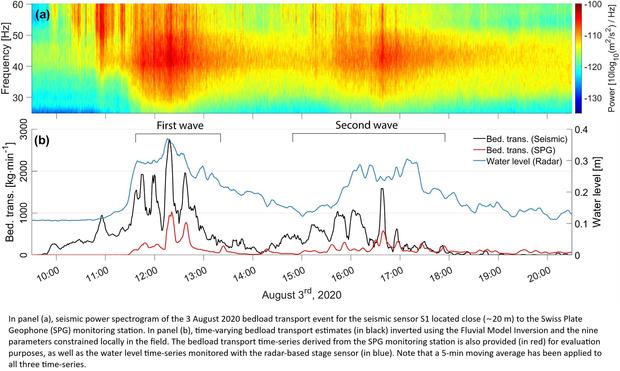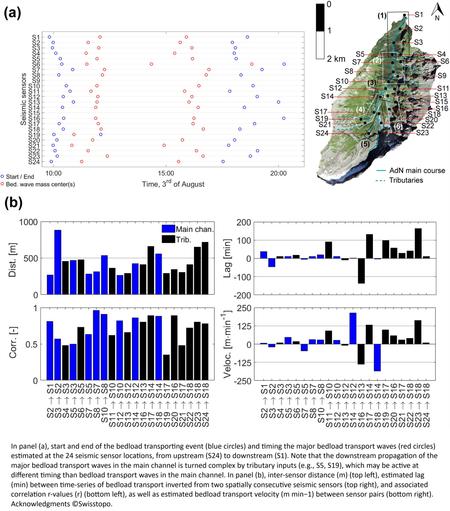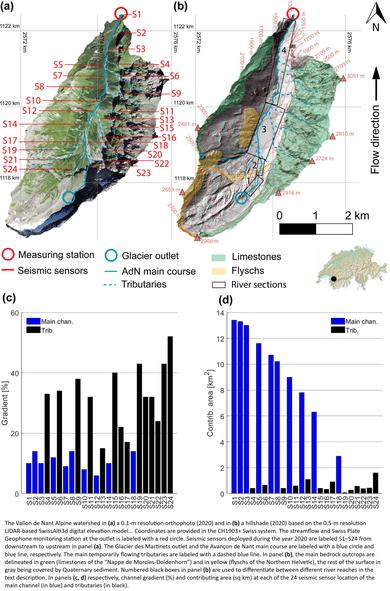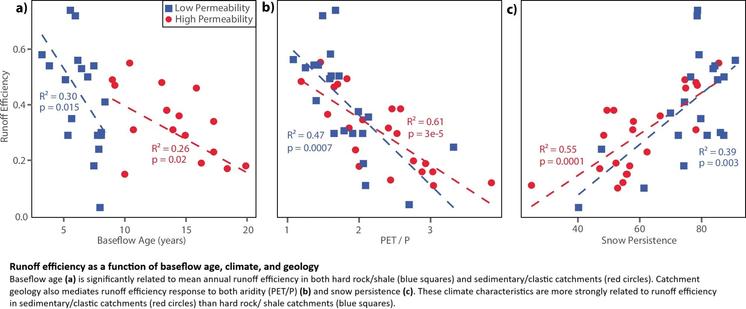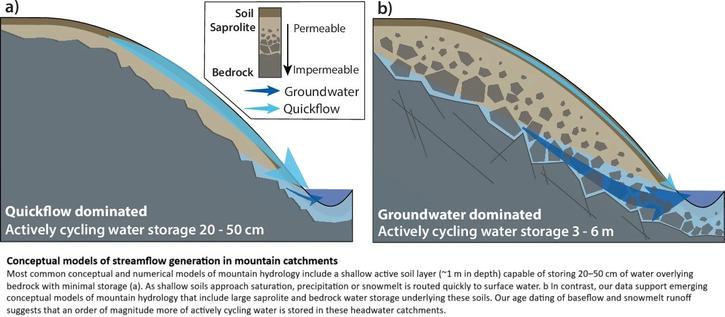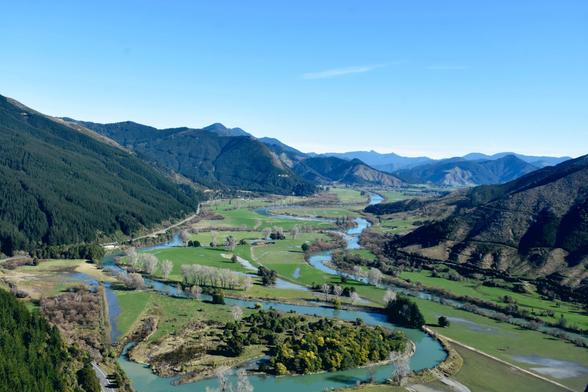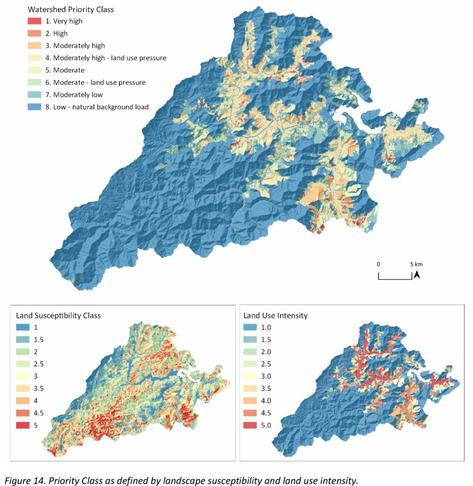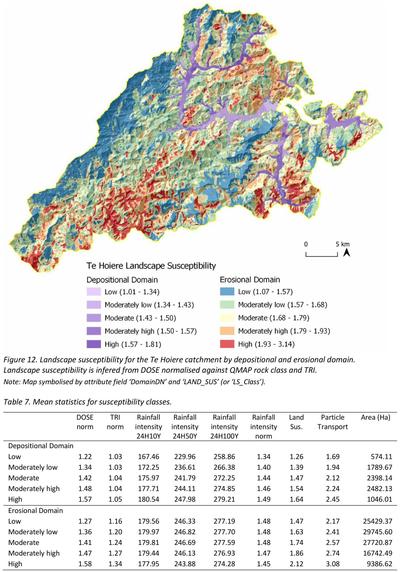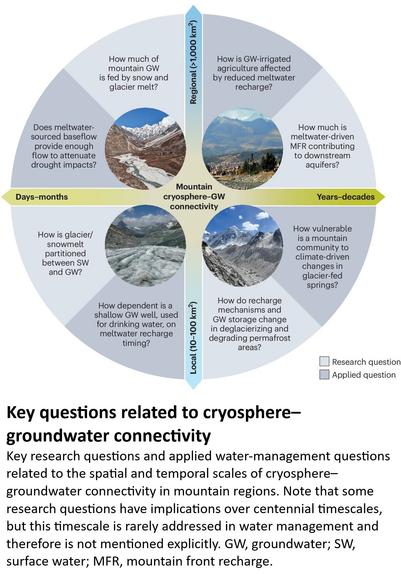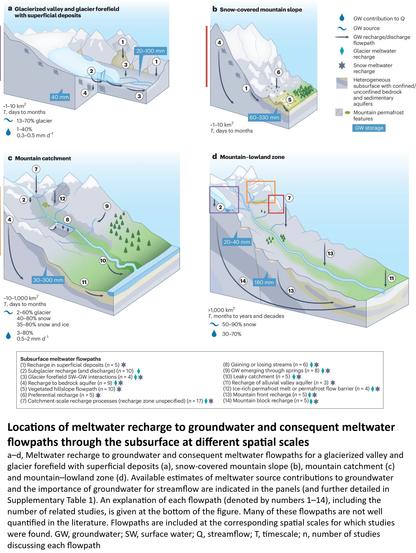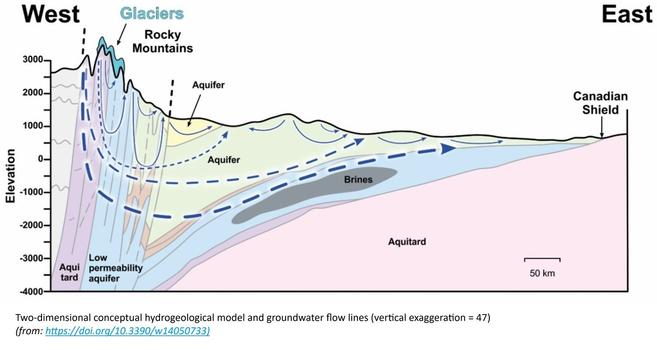--
https://eos.org/editor-highlights/seismometers-listening-at-rivers-to-measure-sediment-transport <-- shared technical article
--
https://doi.org/10.1029/2022JF007000 <-- shared paper
--
“Bedload sediment, transported throughout an alpine catchment by a flood, was remotely tracked in detail by analyzing the ground vibrations recorded by a network of 24 seismic sensors….
--
#GIS #spatial #mapping #water #sediment #remotesensing #bedload #alpine #catchment #flood #seismic #seismology #river #mountianous #watershed #sensor #model #modeling #sedimentology #spatialanalysis #spatiotemporal #erosion #deposition
--
https://doi.org/10.1038/s43247-025-02303-3 <-- shared paper
--
#GIS #spatial #mapping #water #hydrology #fedscience #climatechange #snowmelt #waterresources #watersupply #management #planning #watersecurity #USWest #Rockies #snow #winter #mountain #catchment #dating #tritium #spatialanalysis #spatiotemporal #runoff #streamflow #infiltration #model #modeling #geology #geomorphology #groundwater #storage #surfacewater #streamwater #precipitation #bedrock #soils #sediments #permability #porosity #watershed #subsurfaceflow #storage #climate #future #landscape
Flooding? Get out of the way of the river.
"Historic settlement patterns have pinched our rivers into these narrow corridors. Giving land back to the river means potentially abandoning entire neighborhoods and swaths of town centers."
https://e360.yale.edu/features/vermont-floods
#FossilFuels #floods #flooding #sprawl #rivers #catchment #housing #Queensland
In Vermont, a Push to Prevent Flooding or Get Out of the Way
An increase in extreme precipitation events has hit the tiny, mountainous state of Vermont especially hard. As disaster declarations mount, state officials and community groups are collaborating to restore floodplains, reduce runoff from slopes, and buy out vulnerable homes.
--
http://alturl.com/hxbvg <-- shared technical report
--
http://alturl.com/xkgsv <-- shared related technical article
--
[reminded so much of the engineering geology work I did in my thesis in New Zealand]
#GIS #spatial #mapping #remotesensing #AGRS #gammaray #spectroscopy #engineeringgeology #risk #hazard #massmovement #landslide #rainfall #precipitation #watershed #TeHoiere #Pelorus #Catchment #NewZealand #waterquality #waterresources #water #hydrology #geology #soil #regolith #topography #slope #aspect #spatialanalysis #landuse #humanimpacts #masswasting #erosion #sediment #sedimentation #radiometrics #LiDAR #spatialtools
@TeHoiere
#AGU24 - get together with some other #catchment scientists. Each meeting there are three sessions bringing together #CriticalZone researchers from around the world. The conveners have been doing this for years.
Sessions start this morning at 8:30.
Catchment and Critical Zone Science: Understanding Ecosystems Through Monitoring, Analysis, and Experimentation I Oral
Catchment and Critical Zone Science: Understanding Ecosystems Through Monitoring, Analysis, and Experimentation I Oral
Catchment, critical zone, and ecosystem studies are foundational to hydrological and biogeochemical process understanding. They include place-based studies with sustained monitoring that have shaped our understanding of fundamental processes and consequences of environmental change on ecosystems. They also inform environmental policy and lead to transformative ideas that advance science and benefit society. In this session we seek contributions that reveal new insights through observation, experimentation, or modeling, including studies that synthesize across sites and over time. We particularly encourage contributions from research programs that are crucial to scientific discovery, resource management, shaping policy, or promoting societal well-being.
NSW platypuses are accumulating the “forever chemical” perfluorooctane sulfonate (PFOS) in very high concentrations.
"The platypus (Ornithorhynchus anatinus) is a semi-aquatic monotreme that occupies a high trophic position in the freshwater ecosystems of eastern mainland Australia and Tasmania. Platypuses are continuously exposed to anthropogenic contaminants including perfluorooctane sulfonate (PFOS). This study examined PFOS concentrations in the livers of deceased platypuses (eight wild; one captive) that were opportunistically collected across NSW over a two- and a half-year period. There was a large variation in PFOS concentrations, ranging from < 1 µg/kg to 1200 µg/kg. This study presents the first report of PFOS contamination in platypuses, revealing their PFOS levels are broadly similar to those found in river otters (Lutra canadensis) and lower than those in American mink (Mustela vison), both which occupy similar ecological niches in freshwater systems. This study raises concerns about the impact of PFOS on platypus health."
"Platypuses are vulnerable to many impacts associated with human activity including hydrological changes, decline in water quality, increase in litter and discarded fishing line, illegal opera house nets (yabby traps) and water contamination...There are no guidelines on what constitutes safe concentrations of PFOS in wildlife."
>>
Warwick, K.G., Wright, I.A., Whinfield, J. et al. First report of accumulation of perfluorooctane sulfonate (PFOS) in platypuses (Ornithorhynchus anatinus) in New South Wales, Australia. Environ Sci Pollut Res 31, 51037–51042 (2024). https://doi.org/10.1007/s11356-024-34704-w
#pollution #water #rivers #contamination #NSW #Wildlife #platypus #platypuses #penguins #PFOS #PFAS #ForeverChemicals #Gleniffer #bellingen #NeverNever #bellinger #catchment #AquaticInvertebrates #DrinkingWater #FoodChain #SyntheticChemicals
First report of accumulation of perfluorooctane sulfonate (PFOS) in platypuses (Ornithorhynchus anatinus) in New South Wales, Australia - Environmental Science and Pollution Research
The platypus (Ornithorhynchus anatinus) is a semi-aquatic monotreme that occupies a high trophic position in the freshwater ecosystems of eastern mainland Australia and Tasmania. Platypuses are continuously exposed to anthropogenic contaminants including perfluorooctane sulfonate (PFOS). This study examined PFOS concentrations in the livers of deceased platypuses (eight wild; one captive) that were opportunistically collected across NSW over a two- and a half-year period. There was a large variation in PFOS concentrations, ranging from < 1 µg/kg to 1200 µg/kg. This study presents the first report of PFOS contamination in platypuses, revealing their PFOS levels are broadly similar to those found in river otters (Lutra canadensis) and lower than those in American mink (Mustela vison), both which occupy similar ecological niches in freshwater systems. This study raises concerns about the impact of PFOS on platypus health.
--
https://phys.org/news/2024-07-uncovering-link-meltwater-groundwater-mountain.html <-- shared technical article
--
https://doi.org/10.1038/s44221-024-00277-8 <-- shared paper
--
#GIS #spatial #mapping #groundwater #meltwater #mountains #watertowers #cryosphere #watercycle #glacier #glacial #climatechange #hydrologiccycle #catchment #spatialanalysis #spatiotemporal #mountainwatercycle #snowpack #ice #permafrost #connectivity #reducing #producing #waterresources #watermanagement #social #watersecurity #ecology #habitat #sustainable #risk #hazard #waterquality
Uncovering the link between meltwater and groundwater in mountain regions
An international group of experts in mountain hydrology argue that the traditional understanding of the mountain water cycle has largely ignored the role that cryosphere-groundwater interactions play. This oversight could lead to incomplete or inaccurate predictions of water availability in mountain regions, especially in the context of climate change, suggest the authors in a Perspective Paper appearing in Nature Water.
Free final online conference of #WATSON
“WATer isotopeS in the critical zONe: from groundwater recharge to plant transpiration”
10, 11, and 12 September 2024
👉 Abstract submission deadline 1 July👈
Main topics
💧 #Groundwater and #soil #water #recharge (day 1)
💧 #ecohydrology #plant #water #uptake (day 2)
💧 #Catchment #hydrology, catchment-scale water #residence #time and #travel #times (day 3)
📢 information and @
🕸 https://lnkd.in/dTVe_HZM 🕸
Thank you to @TetzlaffEcoHyd for her positive preliminary advice on this #commentary and to
@jmcnamaraboise for his great editing support!
Daniele Penna @pennalp


